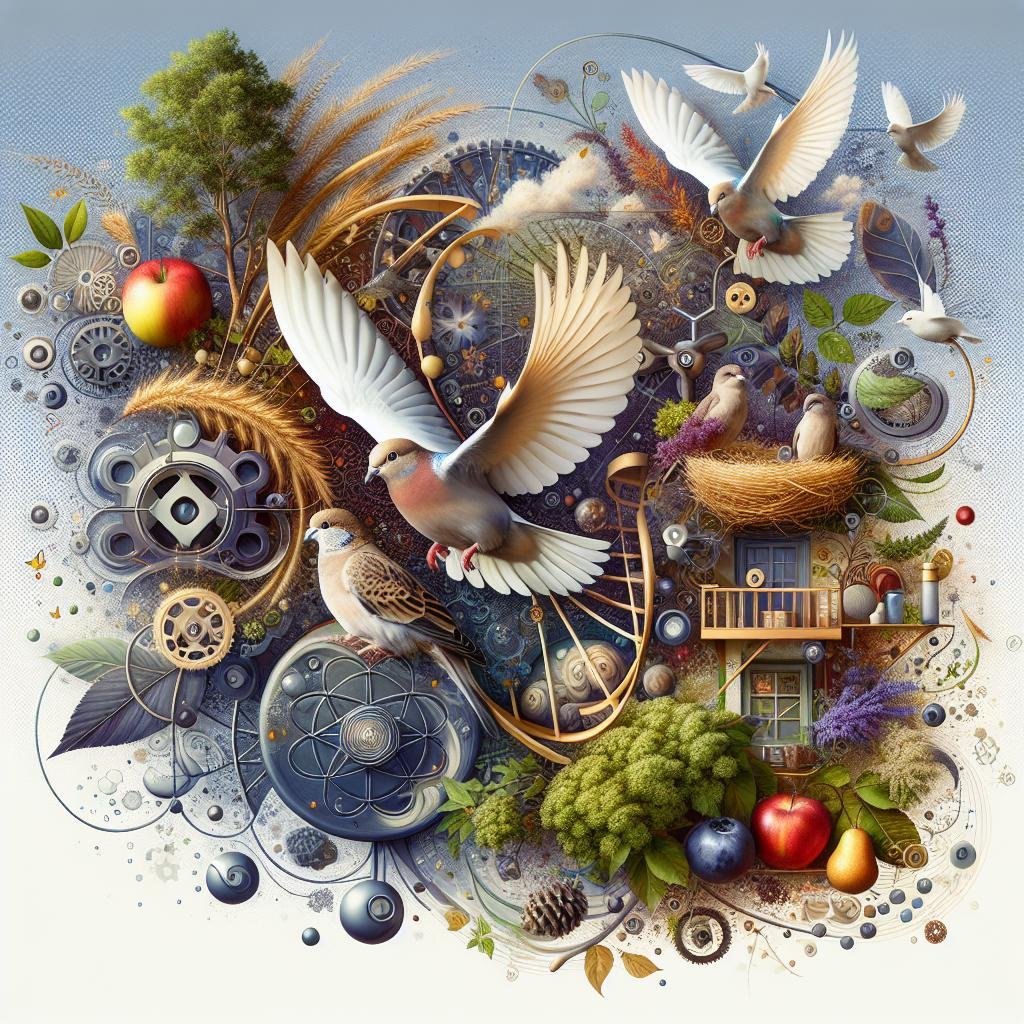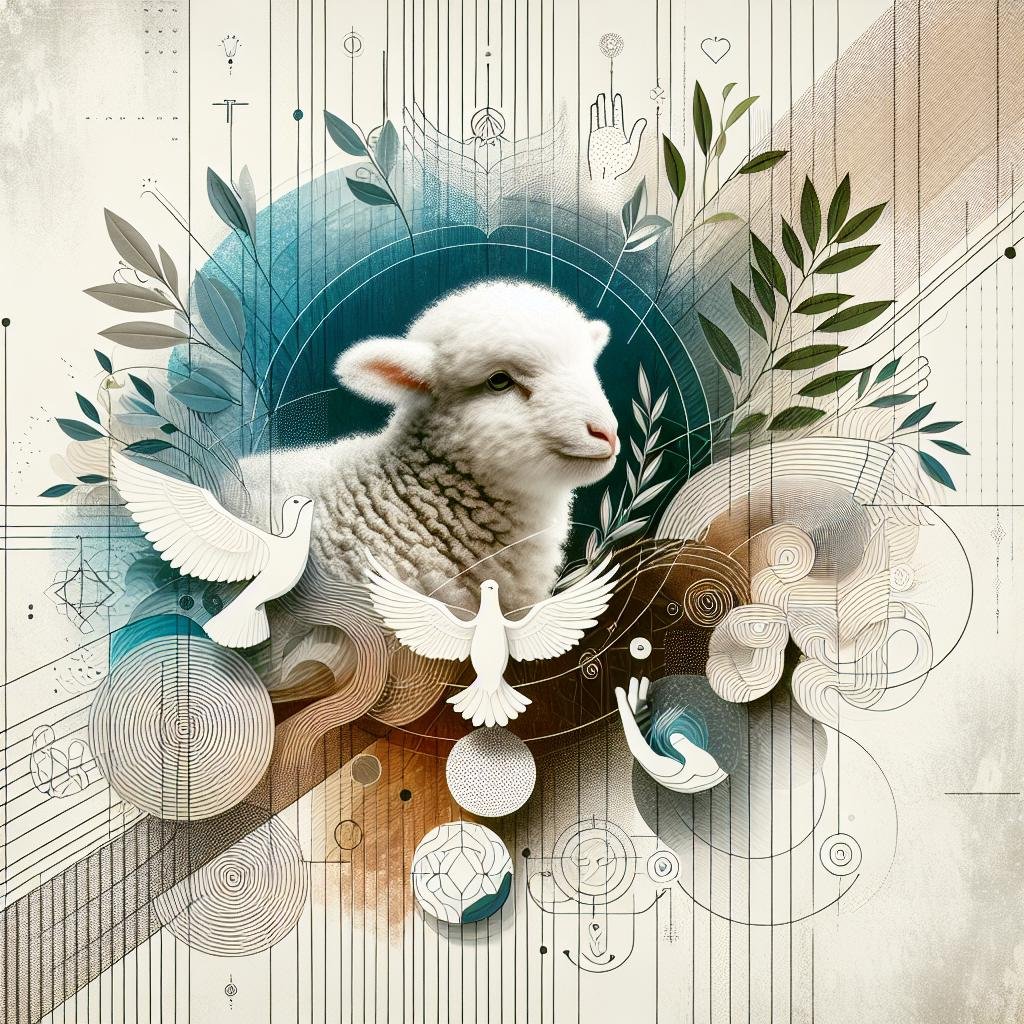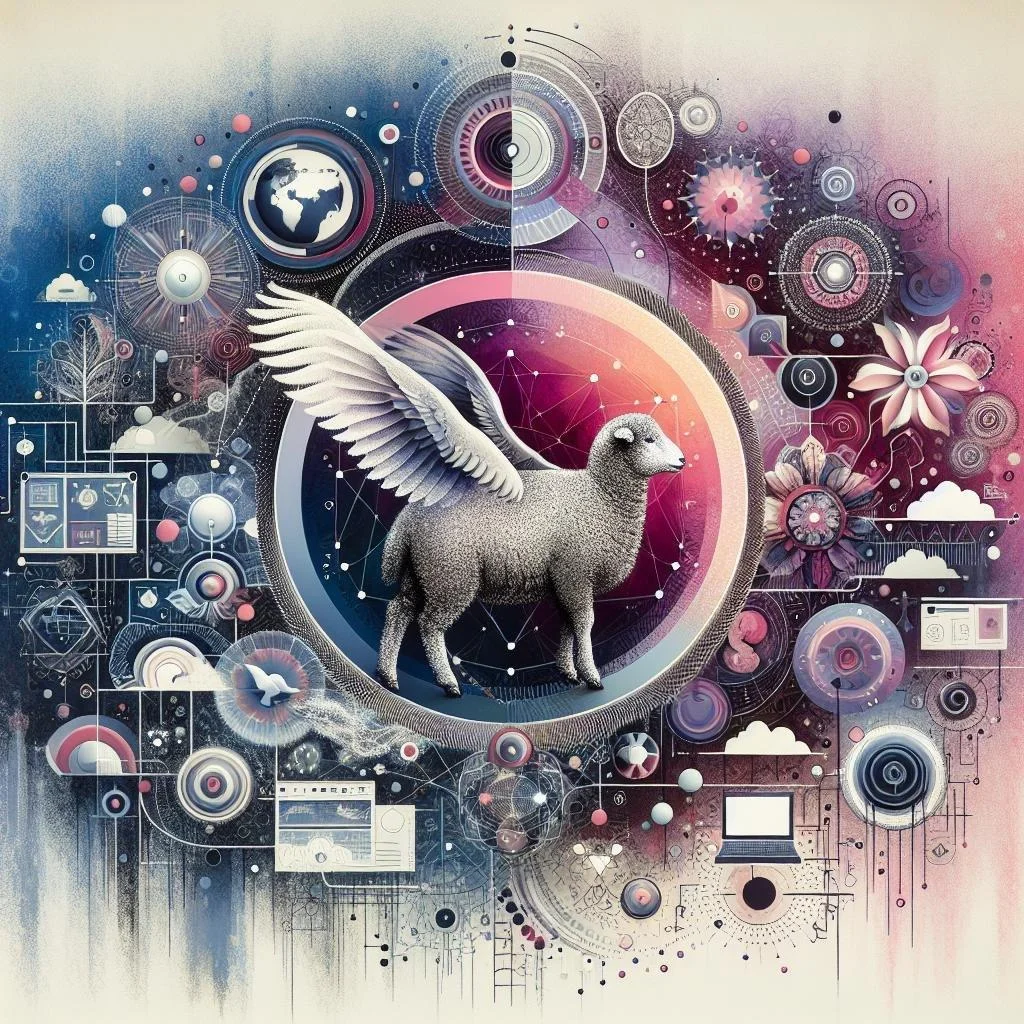Exploring the Symbolism of Animals in the Bible: A Wild Journey Through Scripture
Have you ever paused to consider the rich tapestry of symbolism woven throughout the pages of the Bible? While many readers may focus on the profound messages of faith, redemption, and grace, there’s another layer of meaning that often goes unnoticed—the vibrant world of animals that gallop, leap, and slither through its verses. From the gentle lamb leading us to serenity to the mighty lion roaring with courage, these creatures offer a delightful lens through which we can explore deep spiritual truths. Join us on this whimsical journey as we delve into the symbolic significance of animals in Scripture, uncovering the lessons they hold and the connections they create with our own lives. With an open heart and a curious spirit, let’s embark on a captivating adventure to discover what these biblical beasts have to teach us about faith, humanity, and the divine.
Understanding the Mighty Lion: Strength and Leadership in Scripture
In the vast tapestry of biblical imagery, the lion stands out as a powerful symbol of strength and leadership. Often associated with the tribe of Judah, the lion represents both might and nobility. The Scriptures illustrate the lion as a creature that embodies not just ferocity but also protective leadership. For instance, in Revelation 5:5, Jesus is referred to as the “Lion of the tribe of Judah,” encapsulating the duality of fierce strength and divine authority. This symbolism encourages believers to look to God as their ultimate protector and guide, instilling confidence and resilience amidst life’s challenges.
Furthermore, the lion’s role in the Bible serves to inspire leaders to embrace courage and integrity. When examining how lions live within their prides, we see traits of loyalty and responsibility that resonate with biblical teachings on leadership. Consider the following qualities:
- Bravery: Leading in faith despite adversity.
- Wisdom: Making thoughtful decisions for the community.
- Protection: Guarding the vulnerable and upholding justice.
This enduring symbolism of the lion is a reminder that true leadership is marked by strength that uplifts others, reflecting the heart of Christian teachings centered on love, service, and sacrifice.

The Serpents Dual Nature: Wisdom and Deception in Biblical Context
In biblical texts, the serpent emerges as a multifaceted symbol embodying both wisdom and deception. In Genesis, the serpent is depicted as a cunning creature, enticing Eve with the promise of enlightenment through the forbidden fruit. This portrayal highlights the serpentine duality: while it offers insights into divine knowledge, it simultaneously leads humanity astray. Its role as both a guide and trickster invites readers to ponder the complexities of moral choices, suggesting that the pursuit of wisdom can sometimes veil underlying treachery. The tension between enlightenment and temptation encapsulates the serpent’s ability to navigate the thin line between truth and falsehood, making it a profound symbol in the narrative of human fallibility.
Throughout various scriptures, the serpent’s representation oscillates, sometimes embodying healing and salvation. For instance, in Numbers 21:9, the bronze serpent serves as a symbol of restoration, where looking upon it is an act of faith that brings healing. This duality extends into the New Testament as well, where the serpent is referenced in contexts that highlight the necessity of discernment. Believers are warned to be wise as serpents but also innocent, promoting a delicate balance between shrewdness and purity. This juxtaposition encourages a deeper understanding of how wisdom, much like the serpent, can either illuminate or mislead, urging a reflective approach to faith and knowledge.

Doves and Sparrows: Messages of Peace and God’s Provision
Doves and sparrows hold profound significance in the biblical narrative, symbolizing ideals such as peace, grace, and provision. Doves, often depicted as gentle creatures, represent the Holy Spirit and the promise of tranquility amidst turmoil. Their presence in the scriptures, notably during the baptism of Jesus, signifies divine approval and love. Similarly, the sparrow, a seemingly insignificant bird, is a testament to God’s unwavering care for all of His creations. The gospel of Matthew reminds us that not a single sparrow falls to the ground without God’s knowledge, emphasizing that even the smallest lives matter deeply in the grand tapestry of existence.
These birds serve as reminders of faith and trust in God’s provision, illustrated by their place in various parables. Consider the following aspects of these birds:
- Symbol of Peace: Doves often embody the peace that surpasses understanding, encouraging us to seek harmony in our lives.
- Divine Care: Sparrows reflect God’s attention to the minute details of our lives, reassuring us of His provision.
- Messages of Hope: Both doves and sparrows remind us that hope is never lost, as God watches over us even in our darkest times.

The Lamb of God: Innocence, Sacrifice, and Redemption Explored
The image of the lamb resonates profoundly throughout the Scriptures, epitomizing innocence, vulnerability, and ultimate sacrifice. In many passages, this gentle creature serves as a poignant reminder of the fragility of life and the power of redemption. The lamb is not only an integral part of ancient rituals—where it was offered as a sacrifice for atonement—but also signifies purity and the hope of salvation. For instance, each year during Passover, countless lambs were sacrificed, their blood marking the doorposts of the faithful, signifying protection and deliverance from death. This tradition highlights the underlying theme of selflessness, as those who offer the lamb are united in a shared act of faith, believing in the promise of renewal and restoration.
Moreover, the New Testament elevates the symbolism of the lamb to profound theological heights. Jesus Christ is often referred to as the Lamb of God, whose sacrificial death on the cross epitomizes the fulfillment of prophecies and the ultimate act of love for humanity. The connection is beautifully illustrated in the following table, which explores key Biblical references to the lamb and their significance:
| Reference | Context | Significance |
|---|---|---|
| Exodus 12:21-27 | The Passover sacrifice | Protection and liberation |
| Isaiah 53:7 | The suffering servant | Innocence and bearing sin |
| John 1:29 | Jesus’ arrival | Who takes away the sins of the world |
This understanding of the lamb embraces the themes of innocence, sacrifice, and redemption, intertwining the past and present. Through these sacred narratives, believers can find comfort and assurance in the promise that their struggles are not in vain; instead, they pave the way for a brighter, more hopeful future grounded in the love and grace symbolized by the lamb.
Q&A
Q&A: Exploring the Symbolism of Animals in the Bible
Q1: What’s the main idea behind the use of animals in the Bible?
A1: Great question! Animals in the Bible serve as powerful symbols that convey deeper meanings and messages. They often represent different traits, attributes, or spiritual truths. For example, the lamb symbolizes innocence and sacrifice, while the lion represents strength and courage. By weaving these animal symbols into stories, the Bible provides insights into human nature and our relationship with the divine.
Q2: Can you give some specific examples of animals and what they symbolize?
A2: Absolutely! Let’s take the dove, for instance. In the story of Noah, the dove represents peace and hope as it brought back the olive branch, signaling the end of the flood. The serpent, on the other hand, often symbolizes temptation and evil, especially in the Garden of Eden. Then we have the eagle, symbolizing renewal and freedom, as it soars high in the sky, reminding us of our spiritual aspirations. Each animal adds richness to the narrative and connects us to the themes of the scriptures.
Q3: Why do you think symbolism is so significant in the Bible?
A3: Symbolism acts like a bridge between the physical world and spiritual realities. It opens up layers of meaning that might not be immediately apparent. By using animals, the biblical writers engage the imagination and emotions of readers, allowing for a more profound understanding of life’s complexities. It makes the stories relatable and timeless! Plus, who doesn’t love a good animal metaphor?
Q4: How can modern readers apply these animal symbols to their lives today?
A4: There’s a lovely thought! Modern readers can draw inspiration and lessons from these symbols by reflecting on their own experiences. For example, when we think of the lamb’s symbolism of sacrifice, we can consider the ways we can show kindness and selflessness in our communities. Recognizing the eagle’s symbolism of renewal can encourage us to embrace change and seek spiritual growth. Ultimately, these animal symbols serve as reminders of the virtues we aspire to embody in our daily lives.
Q5: Are there any animals that seem to be misinterpreted in their symbolism?
A5: Yes, that’s an intriguing point! The whale, for instance, is often seen merely as an ominous creature in the story of Jonah, but it can also symbolize God’s mercy and the idea of being swallowed by grace and brought back to purpose. Similarly, the wolf is generally viewed with caution because of its predatory nature, yet it also represents loyalty and family bonds in certain contexts. These nuanced interpretations remind us that symbolism can be fluid, revealing different truths at different times.
Q6: So, how can someone deepen their understanding of these symbols?
A6: To deepen your understanding, start by reading biblical texts with a focus on the animals mentioned. Consider the cultural and historical context of each symbol—what did it mean for people in biblical times? Engaging in group discussions, attending workshops, or diving into commentaries can also help you explore various interpretations. And of course, open your heart and mind! Personal reflections and prayers can lead to unique insights that resonate with your own journey.
Q7: Any final thoughts on the symbolism of animals in the Bible?
A7: Just remember that the world of biblical animal symbolism is vast and filled with surprises! Each creature has its own story to tell and lesson to impart. By exploring these symbols, we not only gain a deeper appreciation for the text but also enrich our spiritual paths. So, take a moment to observe the animal world around you, and you might just catch a glimpse of something sacred holding a message for your own life! Happy exploring!
The Way Forward
As we close the pages of our exploration into the rich tapestry of biblical animal symbolism, we’re reminded that the creatures of the world not only roam our earth but also roam the sacred texts, each one echoing profound truths and deep meanings. From the playful whispers of the dove to the mighty roar of the lion, these animals beckon us to look beyond the surface and discover the spiritual lessons they embody.
Throughout history, these symbols have served as guides, teaching us about courage, humility, sacrifice, and divine love. Whether you find yourself captivated by the wisdom of the serpent or the innocence of the lamb, each animal invites us to see God’s handiwork in a new light, bridging the gap between the divine and the mundane.
So, as you embark on your own journey of discovery—be it through reading, reflection, or even a simple stroll in nature—may you carry the stories of these creatures in your heart. Let their symbols shepherd you through life’s challenges, inspire your dreams, and deepen your understanding of faith. The next time you encounter an animal in the pages of scripture—or perhaps in your own backyard—take a moment to pause, listen, and embrace the lessons they have to share.
Thank you for joining us on this adventurous exploration! May your days be filled with the wonder of nature and the wisdom of the ages.

